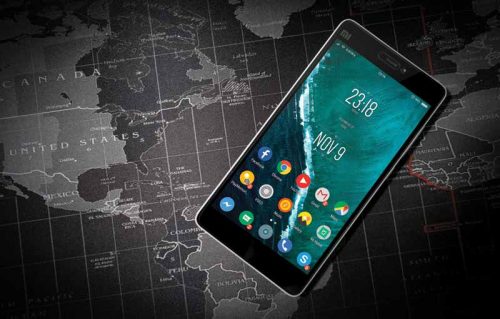A holistic digital signage strategy

By using the customer’s location within a property, businesses can push notifications to their smartphone.
Digital signage is used across a variety of verticals to gain attention for advertising, information messaging, entertainment, and merchandising. Consumers have come to expect the bright, flashing screens as having important information accessible to them. Digital maps and wayfinding are one component of this digital signage strategy. Ads, proximity marketing, and mobile applications are just some of the ways companies are harnessing the power of digital to encourage more business. While these tactics are effective, they require accurate maps and location data to ensure the greatest ROI for company marketing efforts.
Being able to communicate with customers in real-time can have a marked increase on sales. Imagine a customer has just finished making a purchase in a shopping centre. They are navigating using wayfinding, and have some time to spare after buying what they came for. They are now standing next to a shoe store, which is having a sale. By using the customer’s location within the property, businesses can push a coupon to their mobile device to let them know of the promotion and potentially secure an impulse buy. Being able to update a customer with promotions that are happening in stores near them or stores that are recommended for them allows for a personalized experience, showcasing the usage of digital within a physical space.
One example of a commercial property that has implemented a large-scale wayfinding solution is The Dubai Mall. The large shopping centre overhauled its wayfinding in an attempt to increase customer interaction within the shopping centre. The sheer size of the 548,128-m2 (5.9 million-sf) centre meant it was difficult to navigate and find the best route, lessening the impact of the 1200 stores and establishments available for consumers. The addition of a holistic digital wayfinding experience resulted in 2.8 million wayfinding sessions six months after implementation.
Where is wayfinding going?
New technologies are always being launched, tested, and improved upon. Wayfinding as an industry is no different. More features are being developed to improve load times, accurately determine user positions, and improve the customer experience.
Augmented reality (AR) involves using a mobile device or tablet to interact with and explore one’s surroundings using computer-generated images that are superimposed on the user’s view of the real world. Augmented reality is used to engage the user with their surroundings, using any number of senses to share and view information. Virtual reality (VR) takes this same experience and places it within a fully simulated environment, allowing for full customization and immersion.
Taking this one step further into the digitizing landscape is the addition of artificial intelligence (AI), allowing customers to ask questions and get answers in the same experience before being directed to the product or service they are seeking. The addition of these features to a full-scale digital wayfinding solution helps to round out and immerse the customer in every aspect of a retailer’s brand.
At the end of the day, the goal of wayfinding will always be “Where are you?” and “Where do you want to go?” However, there are many aspects of wayfinding that lend themselves to improving the experience a consumer has with all touchpoints with a brand. The horizons of wayfinding are expanding to include “How do you want to get there?”, “What do you want to see?”, and also “Have a look at this!” The closer one looks at what a consumer wants to see, the more one can show them.
Hongwei Liu is the founder and CEO of Mappedin, a Waterloo, Ont.-based company focused on powering search and discovery indoors. Mappedin is a leading provider of indoor geospatial information system (GIS) tools, which allow property managers to digitize their venues and enable digital experiences for guests and employees. Today, Mappedin’s software is deployed across 450 venues in 25 countries. For more information, visit www.mappedin.com.





